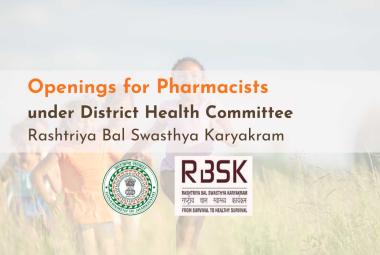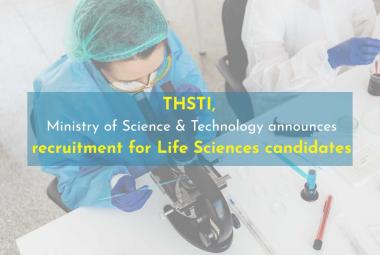{ DOWNLOAD AS PDF }
 ABOUT AUTHORS:
ABOUT AUTHORS:
Fatema Nasrin1*, Saikat Ranjan Paul2, Sonia Zaman2, Sabiha Ferdowsy Koly2
1Senior Lecturer, Department of Pharmacy, Southeast University, Banani, Dhaka-1213
2Lecturer, Department of Pharmacy, Southeast University, Banani, Dhaka-1213
nasrin_0209@yahoo.com
ABSTRACT
In the present study the antimicrobial & cytotoxic activity of crude methanolic extracts of leaves and stems of VignaMungoLinn. Hepper (Family-Leguminosae)were studied. Antimicrobial activity was tested against eleven important pathogenic bacteria including both gram positive and gram negative bacteria and two common fungi. The bacteria are B. megaterium, B. subtilis, Staphylococcus aureus, Sarcina lutea, Escherichia coli, Salmonella paratyphi, S. typhi, Shigella boydii, S. dysenteriae Vibrio mimicus and V. parahemolyticus. Disc diffusion technique was used for invitro antibacterial and antifungal screening. Here kanamycin disc (30mg /disc) was used as standard for antibacterial study. The extracts showed antimicrobial activity against most of the bacterial strains with an average zone of inhibition of 10-20mm. The tested fungi are Candida albicans and Aspergillus niger. The extracts showed very good antifungal activity with an average 15 -19 mm zone of inhibition. The methanolic extracts of leaves of V. mungo showed maximum activity (19 mm, zone of inhibition) against Bacillus megaterium (19mm) with Minimum inhibitory concentration (MIC) values of 64mg/ml. The maximum zone of inhibition for the methanolic extracts of stems was found 20mm against Shigellaboydii with MIC values of 64mg/ml. Cytotoxicity test was also studied by Brine Shrimp Lethality Bioassay and compare with LC50 values of standard vincristin sulphate as a positive control. The results illustrated significant cytotoxicity against A. salina, with LC50 0.67μg/ml, 4.52 μg/ml and 3.25 μg/ml for vincristine sulphate as standard, leaves and stems extracts, respectively. Further pharmacological investigations are required to understand the underlying mechanism of these pharmacological activities.
[adsense:336x280:8701650588]
REFERENCE ID: PHARMATUTOR-ART-2330
|
PharmaTutor (ISSN: 2347 - 7881) Volume 3, Issue 4 How to cite this article: F Nasrin, SR Paul, S Zaman, SF Koly; Study of Antimicrobial and Cytotoxic activities of Vigna Mungo Linn. Hepper; PharmaTutor; 2015; 3(4); 40-46 |
INTRODUCTION
Human infections particularly those involving microorganisms i.e. bacteria, fungi, viruses, they cause serious infections in tropical and subtropical countries of the world. In recent years, multiple drug resistance in human pathogenic microorganisms has been developed due to indiscriminate use of commercial antimicrobial drugs commonly used in the treatment of such diseases [1]. The problem of microbial resistance is growing and the outlook for the use of antimicrobial drugs in the future is still uncertain. Therefore, action must be taken to combate this problem. Biomolecules of plant origin appear to be one of the alternatives for the control of the antibiotic resistant human pathogens [2].
VignaMungoLinn.Hepper ( Family-Leguminosae)is an erect, suberect or trailing, densely hairy, annual herb. The pods are narrow, cylindrical and up to six cm long. The plant grows 30–100 cm with large hairy leaves and 4–6 cm seed pods [3]. it is widely distributed in tropical West Africa and extensively cultivated all over in Bangladesh and commonly known as Black gram. The seeds of V. mungo is mostly consumed as pulse and very rich in carbohydrate, fat, protein, fibre [4] and flavonoids such as kaemferol-3-0-rutinoside, kaemferol-3-0-glucoside, robininin etc.[5,6]. They are also used as astringent, diet during fever, poultice for abscesses, soap alternative [7]. The young leaves are used as vegetable [8]. The Hotaqueous extracts of the leaves are used in the treatment of brain disorders, stomach, rheumatic pain and inflammatory disorders indicating that the plants leaves may possess anti-inflammatory, analgesic and ulcerogenic properties among others [9]. The antiatherogenic nature of Phaseolus Mungo L. has been reported[10]. The enzymes IAAoxidase and peroxides are responsible for the production of IAA [11]. Black gram fibre exhibits significant hypoglycemic action in experimental animals [12]. No report was found of the V. mungo on antimicrobial activity. So, an endeavour was made to assess scientifically the antimicrobial effects and cytotoxic activity of methanolic extract of V. mungo leaves and stems.
[adsense:468x15:2204050025]
Materials and Methods
Plant materials
The leaves and stem of V. mungo were collected in February 2012 from Mirpur, Dhaka Bangladesh and authenticated at Bangladesh National Herbarium, where a voucher specimen no DACB 35415 has been deposited.
Extraction and isolation
The air-dried leaves and stems (1kg) were finely pulverized and extracted by percolation with methanol for seven days at room temperature. The extracts were filtered and concentrated under vacuum to obtain a crude extract of V. mungo.
Antimicrobial assay
Microorganisms
Antimicrobial activity was tested againstB. megaterium, B. subtilis, Staphylococcus aureus, Sarcinalutea, Escherichia coli, Salmonella paratyphi, S. typhi, Shigellaboydii, S. dysenteriae, Vibrio mimicus,V. parahemolyticus, Candida albicans and Aspergillusniger. These microbial strains were isolated from clinical samples and obtained as pure cultures from the Institute of Nutrition and Food Science (INFS), University of Dhaka, Bangladesh.
Antimicrobial screening by the diameters of inhibition zone
The prepared crude methanolic extracts of V. mungo were tested in vitro for antimicrobial activity by the standard disc diffusion method [13]against the bacteria. Solutions of known concentration (500mg/ 10ml) of the test samples were made by dissolving measured amount of the samples (50 mg) in 1 ml of solvents. Dried and sterilized filter paper discs (6 mm diameter) were then impregnated with known amounts of the test substances (500mg/ disc) using micropipette and the residual solvents was completely evaporated. Discs containing the test materials were placed on to nutrient agar medium uniformly seeded with the test microorganisms. Standard disc of kanamycin (30 μg/disc) and blank discs (impregnated with solvents followed by evaporation) were used as positive and negative control, respectively. These plates were then kept at low temperature (4oC) for 16 hours to allow maximum diffusion of the test materials and kanamycin. The plates were then incubated at 37oC for 24 hours to allow maximum growth of the organisms. The test material having antimicrobial activity inhibited the growth of the microorganisms and a clear, distinct zone of inhibition was visualized surrounding the discs. The antimicrobial activity of the test agents was determined by measuring the diameter of zone of inhibition expressed in mm. The experiment was carried out in triplicate and the mean value was taken.
Antifungal screening
The methanolic extracts of leaves and stems of V. mungo were tested for their antifungal activity against the two selected fungi by the standard disc diffusion method [13]. In this antifungal screening each of the crude extract was used at a concentration of 500μg/disc. Following the above mentioned procedure, the antifungal activity of the test agents was determined by measuring the diameter of zone of inhibition expressed in mm.
Minimum inhibitory concentration (MIC) determination
The MIC is the lowest drug concentration at which there is no growth of the organism by visual reading. The minimum inhibitory concentration of the methanolic extract ofleaveswas determined by serial dilution technique[14] against Escherichia coli, Bacillus cereus, Vibrio parahemolyticus, Bacillus megaterium and Aspergillus niger. The MIC of the methanolic extract of stem was determined against Escherichia coli, Shigella boydii, Bacillus subtitles, Vibrio parahemolyticus and Bacillus megaterium. Nutrient broth was used as bacteriological media. Dilution series were set up with 2, 4, 8, 16, 32, 64, 128, 256, 512µg/ml of nutrient broth medium. The tests were continued out in triplicates. The lowest concentration which did not show any growth of the tested microorganism after macroscopic evaluation was determined as the MIC.
Cytotoxicity screening
Cytotoxic activity of the plant extracts was determined by brine shrimp lethality bioassay method [15]. Brine shrimp lethality bioassayis the assay procedure of bioactive compounds, which indicates cytotoxicity as well as a wide range of pharmacological activities (e.g. anticancer, antiviral, insecticidal, pesticidal, AIDS, etc.) of the compounds [16]. This method detect the lethality of crude extracts on Artemia salina, used as a convenient monitor for the screening. The eggs of Brine Shrimp (A. salina) were hatched in a tank in artificial seawater (3.8% NaCl solution) at a temperature around 370C with constant oxygen supply. Two days were allowed to hatch and mature the nauplii.
For the experiment, the test samples (extracts) were prepared by dissolving them in DMSO (not more than 50 µl in 5 ml solution) and sea water to attain concentrations of 20, 40, 60, 80 and 100 µg/ml. A vial containing 50 µl DMSO diluted to 5ml was used as a control. Standard Vincristine sulphate was used as positive control. Then matured shrimps were applied to each of all experimental vials and control vial. Each test tube contained about 5 ml of seawater and 10 shrimp nauplii. After 24 hours, the vials were inspected using a magnifying glass and the number of survived nauplii in each vial was counted. The rate of mortality of nauplii was found to be increased in concentration of each of the samples. From this data, the percent (%) of lethality of the brine shrimp nauplii was calculated for each concentration.
Lethality concentration determination
The percentage lethality was determined by comparing the mean surviving larvae of the test and control tubes. LC50 values were obtained from the best-fit line plotted concentration verses percentage lethality. Vincristin sulphate was used as a positive control in the bioassay.
RESULT
Result of Antimicrobial Activity test
The extracts of the Vignamungo were screened against eleven human pathogenic bacteria to check antibacterial activities by disc diffusion method. The extracts showed variable zone of inhibition against tested pathogenic bacteria which was shown in table 1.
The zones of inhibition produced by the extracts are 10mm-20mm. The methanolic extracts of leaves of V. mungo showed very good antibacterial activity against all tested pathogenic bacteria. This extract showed very good antimicrobial activity against the Gram-(-)ve E. coli (18 mm), V. parahemolyticus(18)and the Gram-(+)ve B. megaterium (19mm) bacteria with an average zone of inhibition of 15-19mm.
The methanolic extracts of V. mungo stems showed good to excellent antibacterial activity against all tested pathogenic bacteria with an average zone of inhibition of 12-20mm. This extract exhibited very good antimicrobial activity(18mm) against B. subtilis and E. coli. The maximumzone of inhibition exhibited against S. boydii (20mm). The minimum zone of inhibition showed 12mm against B. cereusand P. aeruginosa.
The extracts showed very good activity against the fungus. The exhibited diameter of zone of inhibitions were 19mm, 15mmagainstA. niger and16mm, 16mm againstC. albicans for leaves and stems extracts, respectively.
Result of Minimum Inhibitory Concentration (MIC)
The MIC of the methanolic extract ofleaves was determined by serial dilution technique against E. coli, B. cereus, V. parahemolyticus, B. megaterium and A. niger. All the mentioned organisms under MIC assay were found to be the conc. of 64µg/ml (table 1).
The MIC of the methanolic extract of stem was determined against E. coli, S. boydii, B. subtitles, V. parahemolyticus andB. megaterium. The MIC tested against Bacillus subtitles was found to be 128µg/ml others organisms under MIC assay were found to be the conc. of 64µg/ml.
Cytotoxic activity
In cytotoxic test activity, % mortality increased gradually with the increase in concentration of the test samples. LC50 values obtained from the best-fit line slope (Fig 1 & Table 3) were 4.52 μg/ml and 3.25 μg/ml for leaves and stems extracts, respectively,in comparison with vincristine sulphate as standard whose LC50 value was 0.67μg/ml.
DISCUSSIONS
Antimicrobial potential
In the present study the result of antimicrobial activity reveals that all the extracts showed significant antimicrobial activity towards both bacteria and fungi suggested the presence of antimicrobial compounds. The known antibacterial mechanisms of medicinal plants against microorganisms were inhibit cell wall synthesis [17], accumulate in bacterial membranes causing energy depletion [18], or interfere the permeability of cell membrane which had a consequence a permeability increase and loss of cellular constitutes, membrane disruption and changes the structure and function of key cellular constituents, resulting in mutation, cell damage and death [19] . Phenolic and flavonoids contents in various parts of medicinal plant help immune-modulator organs, killing the microorganisms [20]. Phytochemical analysis of V.mungo revealed the presence of glycoside, tannins, alkaloid, flavonoids and Saponins [9]. One of the mechanisms mentioned above might play an important role in antibacterial activity of V. mungo.
In case of antifungal activity both the extract showed almost same potential.
Cytotoxic activity
The brine shrimp assay has advantages of being rapid (24 hours), inexpensive, and simple (eg, no aseptic techniques are required). It easily utilizes a large number of organisms for statistical validation and requires no special equipment and a relatively small amount of sample (2–20 mg or less).It is possible to detect and then monitor the fractionation of cytotoxic, as well as 3PS (P388) (in vivo murine leukemia) active extracts using the brine shrimp lethality bio-assay rather than more tedious and expensive invitro and in vivo antitumor assays. Furthermore, it does not require animal serum as is needed for cytotoxicities [21]. Not only that, there is positive correlation between brine shrimp toxicity and 9KB (human nasopharyngeal carcinoma) cytotoxicity (p = 0.036 and kappa =0.56). And the brine shrimp test was being used as a prescreen for a panel of six human solid tumor cell lines at the Cell Culture Laboratory of the Purdue Cancer Center [21]. This is a internationally accepted bioassay for screening of antitumor compounds [15].
From the results of the brine shrimp lethality bioassay it can be well predicted that V. mungo extracts have considerable cytotoxic potency. Previous phytochemical screening indicated the presence of alkaloids and flavones, which have been shown to possess cytotoxic activity. The variation in results may be due to the difference in the amount and kind of cytotoxic substances (e.g. tannins, flavonoids, triterpenoids, or coumarins) present in leaves and stem parts of V. mungo. The possible mechanism of cytotoxicity of V. mungo against brine shrimp nauplii due to poisonous effect on cell mitosis.
NOW YOU CAN ALSO PUBLISH YOUR ARTICLE ONLINE.
SUBMIT YOUR ARTICLE/PROJECT AT editor-in-chief@pharmatutor.org
Subscribe to Pharmatutor Alerts by Email
FIND OUT MORE ARTICLES AT OUR DATABASE
CONCLUSIONS
The results obtained in our present study indicated that the crude extracts of V. mungo has got profound cytotoxic and antimicrobial effect and may have potential use in medicine. This novel finding will aid us to conduct pharmacological studies to understand the underlying possible mechanisms of the observed activities as well as bioactivity guided isolation and characterization of leading compounds in due course.
Table 1: In vitro antibacterial activity of the methanol extracts of V. mungo (leaves & barks) and kanamycin discs
|
Organisms |
Leaves zone of inhibition (mm) |
Stem zone of inhibition (mm) |
Kanamycin (mm) |
|
Bacillus cereus |
15 |
12 |
29 |
|
Bacillus subtitlis |
17 |
18 |
29 |
|
Staphylococcus aureus |
15 |
15 |
30 |
|
Sarcina lutea |
15 |
17 |
29 |
|
Escherichia coli |
18 |
18 |
26 |
|
P. aeruginosa |
17 |
12 |
29 |
|
Salmonella paratyphi |
17 |
17 |
33 |
|
Shigella dysenteriae |
16 |
15 |
30 |
|
Shigellaboydii |
15 |
20 |
30 |
|
Vibrio parahemolyticus |
18 |
16 |
30 |
|
Vibrio mimicus |
15 |
17 |
30 |
|
Bacillus megaterium |
19 |
18 |
32 |
|
Candida albicans |
16 |
16 |
30 |
|
Aspergillus niger |
19 |
15 |
34 |
Table 2: Minimum Inhibitory Concentration of Plant Extracts against several organisms.
|
Serial no |
Name of the organisms |
MIC of plants extracts |
|
|
Leaves (µg/ml) |
Stem(µg/ml) |
||
|
1 |
E. Coli |
64 |
64 |
|
2 |
Bacillus cereus |
64 |
… |
|
3 |
Shigellaboydii |
… |
64 |
|
4 |
Bacillus subtitlis |
… |
128 |
|
5 |
Vibrioparahemolyticus |
64 |
64 |
|
6 |
Bacillus megaterium |
64 |
64 |
|
7 |
Aspergillusniger |
64 |
… |

Fig 1: Determination of LC50 values for standard and leaves and stems extracts of V. mungo from linear correlation between logarithms of concentration versus percentage of mortality.
Table 3: The result of cytotoxic activity of vincristine sulphate (standard) and leaves and stems extracts of V. mungo on brine shrimp nauplii.
|
Sample |
LC50 |
Regression equation |
R² |
|
Vincristine Sulphate |
0.67 |
y = 12x + 42 |
0.973 |
|
Leaves |
4.52 |
y = 13.14x - 9.333 |
0.964 |
|
Stems |
3.25 |
y = 13.14x + 7.333 |
0.964 |
ACKNOWLEDGEMENT
The authors are thankful to Department of Pharmacy, Southeast University, Banani, Dhaka-1213, Bangladesh, for providing lab facilities to carry out this research work
REFERENCES
1. Mohanasundari C., Natarajan D., Srinivasan K., Umamaheswari S. and Ramachandran A; Antibacterial properties of Passiflora foetida L. - a common exotic medicinal plant. African Journal of Biotechnology: 2007:6(23);2650-2653.
2. Raghavendra M.P., Satish S. and Raveesha K.A; Phytochemical analysis and antibacterial activity of Oxalis corni-culata; a known medicinal plant. My SCIENCE. 2006; 1: 72 -78 .
3. Post Harvest Profile of Black Gram". Government of India, Ministry of Agriculture. 2006.
4. Duranti M; Grain legume proteins and nutraceutical properties. Fitoterapia 2006;77:67-82.
5. Mazur W.M., Duke J.A., Wahala K., Rasku S. and Adlercreutz H ; Isoflavonoids and lignans in legumes: Nutritional and health aspects in humans. Nutr. Biochem ,1998;9:193-200.
6. Seneviratne G.I. and Harborne J.B; Constituent flavonoids and induced isoflavonoids as taxonomic markers in the genus Vigna. Biochem. Syst. Ecol ,1992;20:459-67.
7. Duke J.A; Handbook of Legumes of World Economic Importance. New York, London: Plenum Press; 1981.
8. Asima C. and Satyesh C; The Treatise of Indian Medicine, CSIR, New Delhi, 1992;2;128-129.
9. Md. Rageeb, Md. Usman and Barhate S. D;Anti-inflammatory, analgesic & ulcerogenic activity of Vigna Mungo leaves. Int. J. phytopharmacy. 2011; 1(2);55-60.
10. Srivastava A and Joshi L.D; Effect of feeding black gram (Phaseolus Mungo) on serumlipids of normal and diabetic guinea pigs. Ind. J. Med. Res., 1990;92;383-386.
11. Ghosh S. and Basu P.S; Production and metabolism of indol acetic acid in roots and root nodules of Phaseolus mungo. Microbiol. Res., 2006;161;362-366 .
12. Boby R.G. and Leelamma S; Black gram fiber (Phaseolus Mungo): mechanism of hypoglycemic action, Plant Food Human Nutrition., 2005; 60(4); 173-80.
13. Rahman, M.S. and Rashid M.A; Antimicrobial activity and cytotoxicity of Eclipta prostrata. Ori. Pharm. Experi. Medi.2008; 8: 47-52.
14. De Paiva S. R., Figueiredo M. R., Aragao T. V. and Kaplan M. A; Antimicrobial activity in vitro of plumbagin isolated from Plumbago species. Mem. Inst. Oswaldo. Cruz. 2003;98(7):959-61.
15. Meyer B.N., Ferrigni N.R., Putnam J.E, Jacobsen J.B, Nicholsand D.E. and Mclaughlin J.L; Brine shrimp; a convenient general bioassay for active plant constituents. Planta Med, 1982; 45: 31-34.
16. M Abdul Alim Al?Bari, MK Basar Chowdhury, M Faruk Hossen, M Masem Hossain, Chowdhury M Zakaria and M Anwar Ul Islam. Novel Nickel Cyclam Complexes with Potent Antimicrobial and Cytotoxic Properties. J. Appl. Sci. Res., 2007; 3(11): 1251?1261.
17. Marcucci M.C., Ferreres F., Viguera C., Bankova V.S., Castro S.L. and Dantas A.P; Phenolic compounds from Brazilian propolis with pharmacological activities. J. Ethnopharmacol. 2001;74:105–112.
18. Conner D.E. Davidson P.T. and Branen A.L; Naturally occurring compounds. In Antimicobialsin foods. Marecl Dekker; New York: 1993. pp. 441–468.
19. Kim D.W., Son K.H., Chang H.W., Bae K.S., Kang S.S. and Kim P.P. Anti-inflammatory activity of Sedum Kamtschaticum. J. Enthnopharmacol. 2004;90:409–414.
20. Lin J.Y. and Tang C.Y. Determination of total phenolic and flavonoid conents in selected fruits and vegetables, as well as their stimulatory effects on mouse splenocyte proliferation. Food Chem. 2007;101:140–147.
21. McLaughin J L and Rogers L. L; The use of biological assays to evaluate botanicals, Drug inform. J. 1998; 32: 513-524.
NOW YOU CAN ALSO PUBLISH YOUR ARTICLE ONLINE.
SUBMIT YOUR ARTICLE/PROJECT AT editor-in-chief@pharmatutor.org
Subscribe to Pharmatutor Alerts by Email
FIND OUT MORE ARTICLES AT OUR DATABASE









